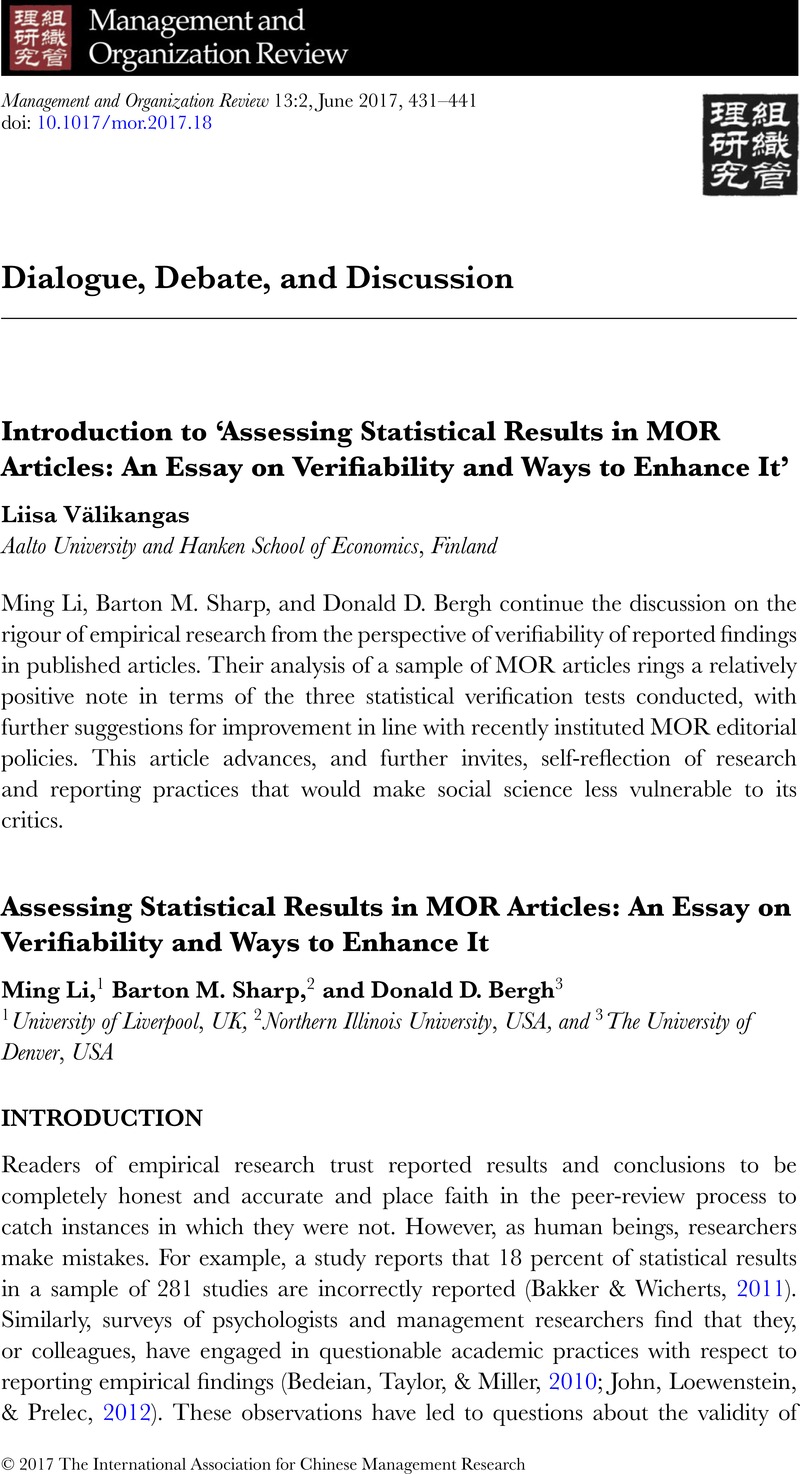Crossref Citations
This article has been cited by the following publications. This list is generated based on data provided by Crossref.
2017.
Preapproved and Preregistered Studies.
Management and Organization Review,
Vol. 13,
Issue. 3,
p.
463.
Liubyva, Tetiana
and
Maksymenko, Ol'ha
2023.
A theoretico-methodological understanding of the concept of trustworthiness in sociology and adjacent branches of knowledge.
Sociology: Theory, Methods, Marketing,
p.
83.
Wulff, Jesper N
and
Taylor, Luke
2024.
How and why alpha should depend on sample size: A Bayesian-frequentist compromise for significance testing.
Strategic Organization,





